
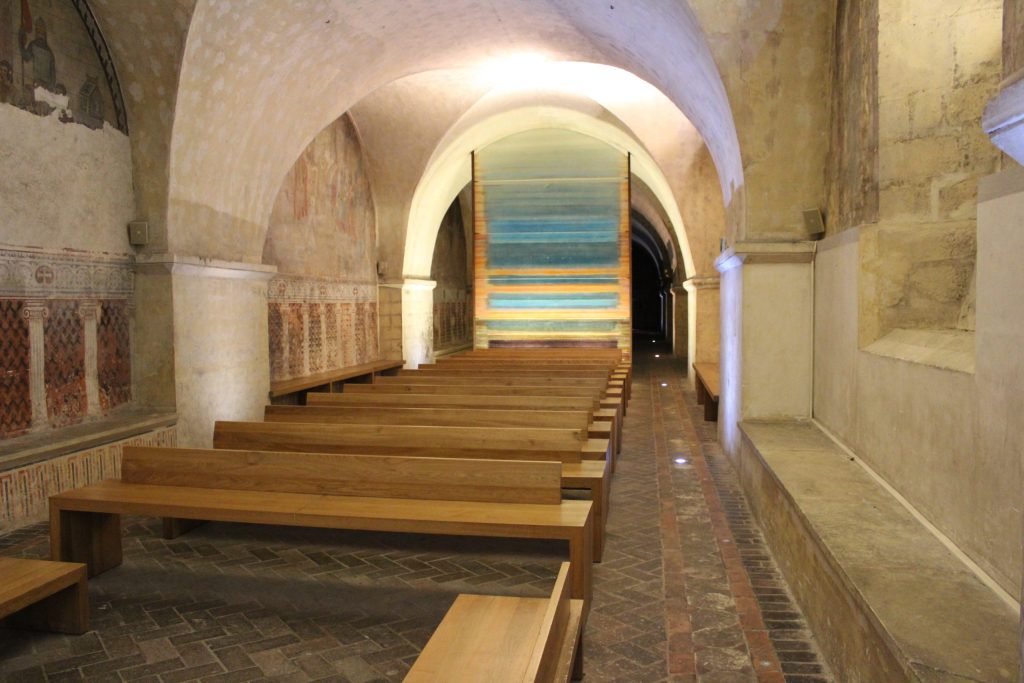
The Chartres Cathedral is considered a masterpiece of Gothic architecture. It has been recognized as a UNESCO World Heritage site since 1979, and it is easily the most famous landmark in Chartres. I recently visited this magnificent building when I attended the Chartres en Lumières festival. The light show on the facade was spectacular, but I also took the time to fully explore the cathedral during the day. And I do mean fully. I was lucky enough to explore the building from top to bottom, including visits to the towers and the crypt and everything in between. After exploring every nook and cranny for almost a whole day, I can report that the Chartres Cathedral truly earns its title of masterpiece.
First up, the Main Building
The current cathedral was built between 1194 and 1260, and it was the first of the many High Gothic masterpieces of France. It is famous for its blue coloured stained glass windows, as well as the labyrinth on the floor in the centre of the nave. Labyrinths were a common feature in Gothic cathedrals of the Middle Ages, but most have now been removed. That is why the labyrinth in Chartres is extra special. Not only is it the original flooring, but it’s one of the few originals remaining.
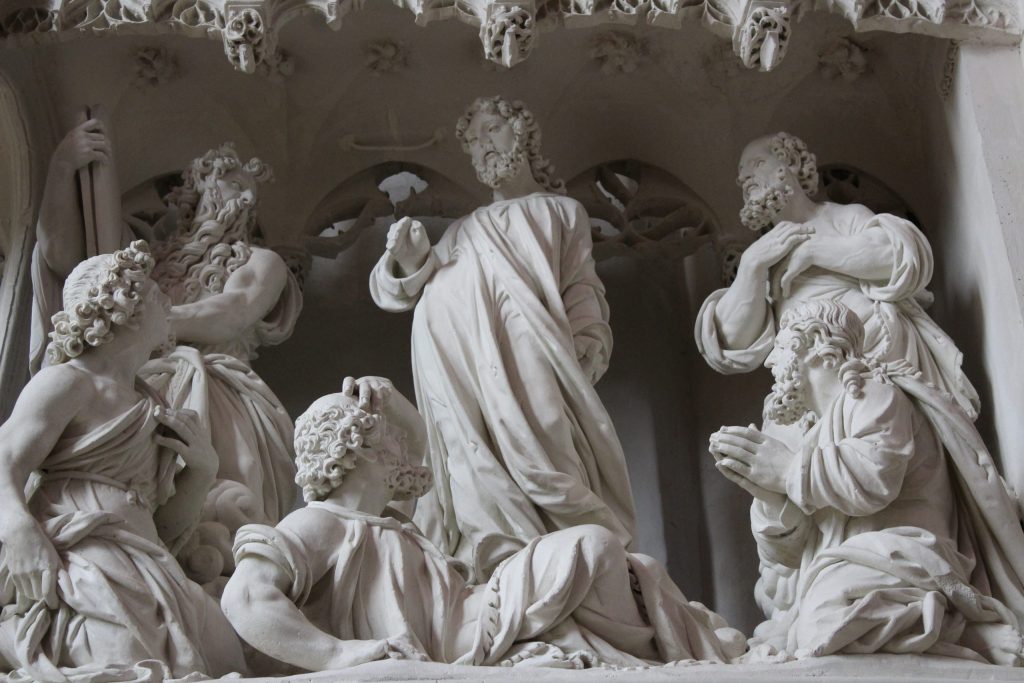
In my opinion, however, the highlight of the main building is the sculpted choir wall that separates the choir from the ambulatory. This wall features 40 scenes altogether, which when taken together, depict the life of both Jesus and the Virgin Mary. Each scene is a masterpiece unto itself, as they are both stunningly beautiful and extraordinarily detailed. Because of this, it took me nearly an hour just to take in this one part of the cathedral.
Next, Down into the Crypt
After exploring the nave and ambulatory, it was time to head down into the crypt of the cathedral. Up to five buildings previously stood on the current location of Chartres Cathedral. Today, the Saint Lubin and Fulbert crypts still exist, with the former dating back to the 10th century. Our visit included a visit to both, as well as chapels, paintings, and frescos that were over a thousand years old. There was even a reliquary with a piece of a veil once worn by the Virgin Mary. My jaw may have dropped at that one. Before returning above ground, we passed by an incredible art installation called the Curtain of Light (pictured at the top). It was installed in 2006, and the contemporary touch it brought to such an ancient place was exquisite.
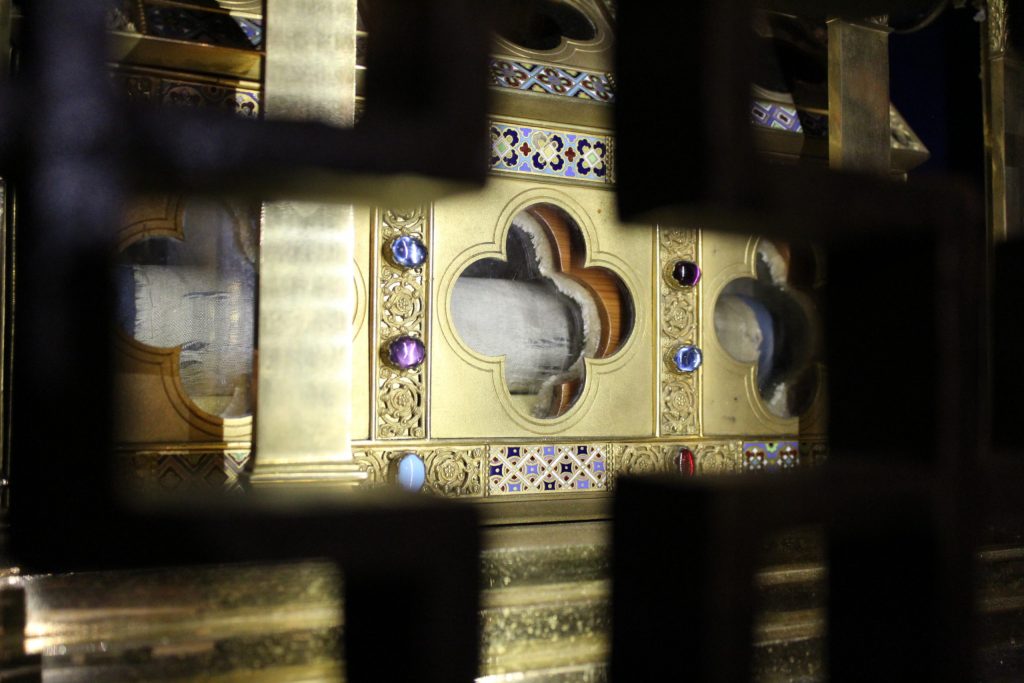
Finally, the Towers of Cartres Cathedral
After venturing underground to the crypt, it was time to head in the opposite direction and climb the towers of the cathedral. Unfortunately, the normal route up the north tower was closed, so our guide led us up the twisting spiral staircase of a smaller tower about halfway down the nave instead. The view from the top was wonderful, but I will admit to feeling somewhat disappointed that our visit to the towers would end there. I never should have doubted this beautiful building.
After talking about the cathedral for several minutes, our guide proceeded to open a small gate that led out to a pathway that ran alongside the edge of the roof. She then began to lead us along this path towards the main bell towers. I cannot begin to describe the thrill of walking along this route. Did I feel like Quasimodo? Absolutely. And I loved every second of it.
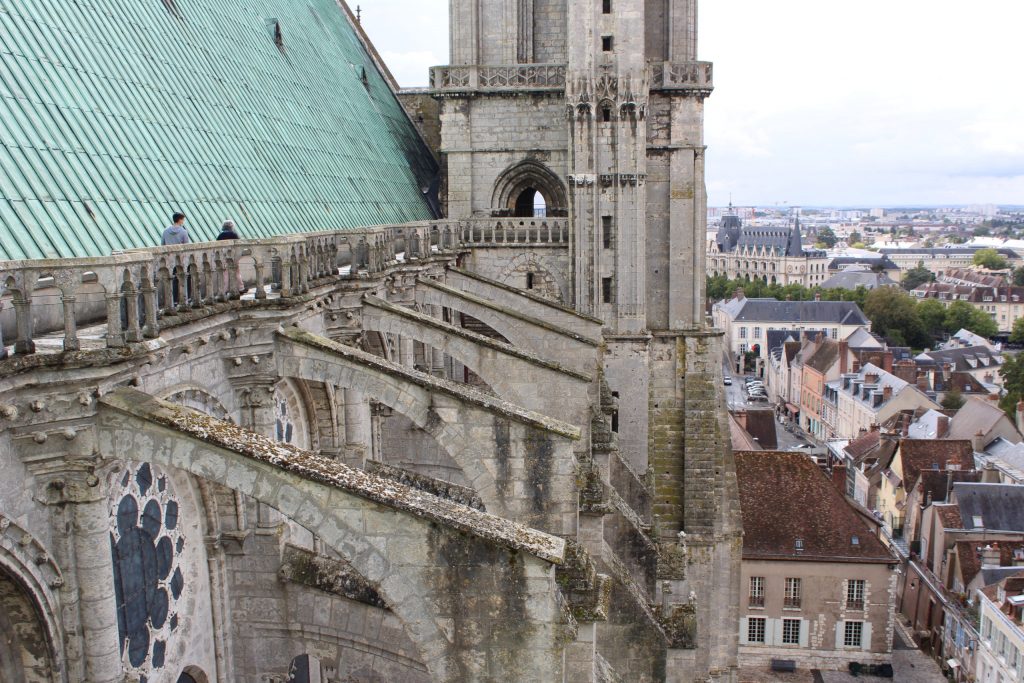
After our journey across the roof, our guide led us into the bell tower, which was beautiful on its own. And then, just when I didn’t think this visit could get any better, she led us up some stairs and into the roof. That’s right. We got to go into the roof of the Chartres Cathedral to see the iron support beams up close. Beams that at the time of their construction had the largest span in Europe. Much like Notre Dame in Paris, Chartres Cathedral lost its roof to a fire in 1836. When it was rebuilt, it was done so using iron instead of wood to prevent another fire from breaking out. Not in my wildest dreams did I imagine we would be allowed into that space. It was an incredible way to cap off an incredible day spent exploring an incredible building.
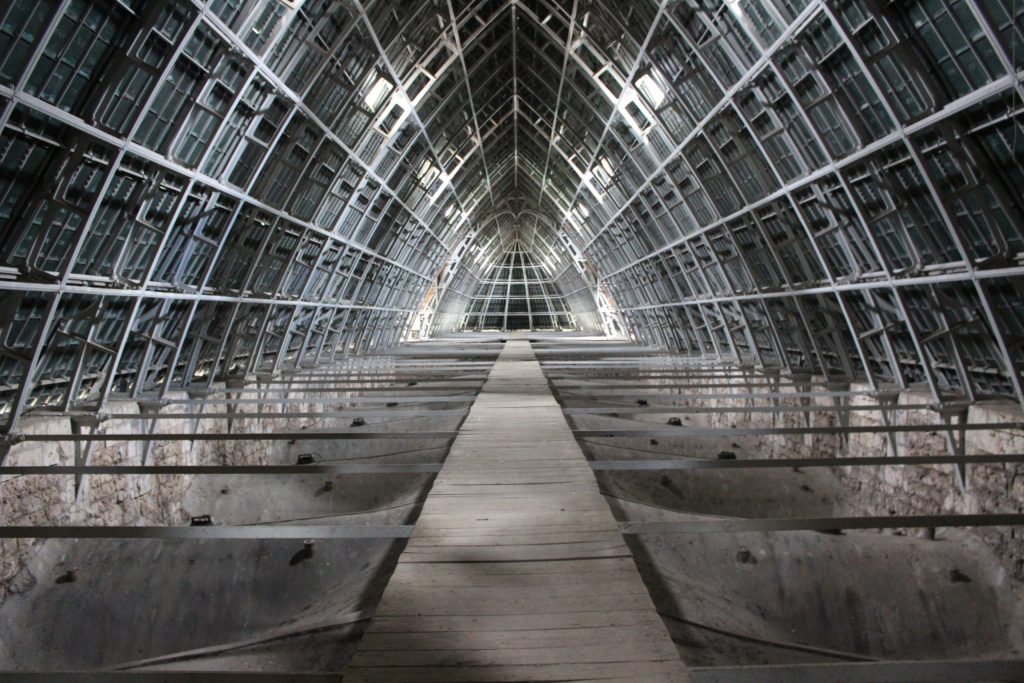
One last story…
In August of 1944, American troops were advancing on Chartres. It was believed that the towers of the cathedral were being used by the Germans as artillery positions, and an order was given to destroy the building. Colonel Welborth Griffith Jr. questioned the order, and then volunteered to go behind enemy lines to search the cathedral. When he found it to be empty, the order was rescinded. Colonel Griffith was killed in action later that same day in the nearby town of Lèves, and today he is honoured with a plaque commemorating his actions that saved the Chartres Cathedral.
Laura Moore is a professional storyteller who loves history and the many stories that make Paris one of the most fascinating cities in the world. Join one of her signature tours to learn the story of a city.



